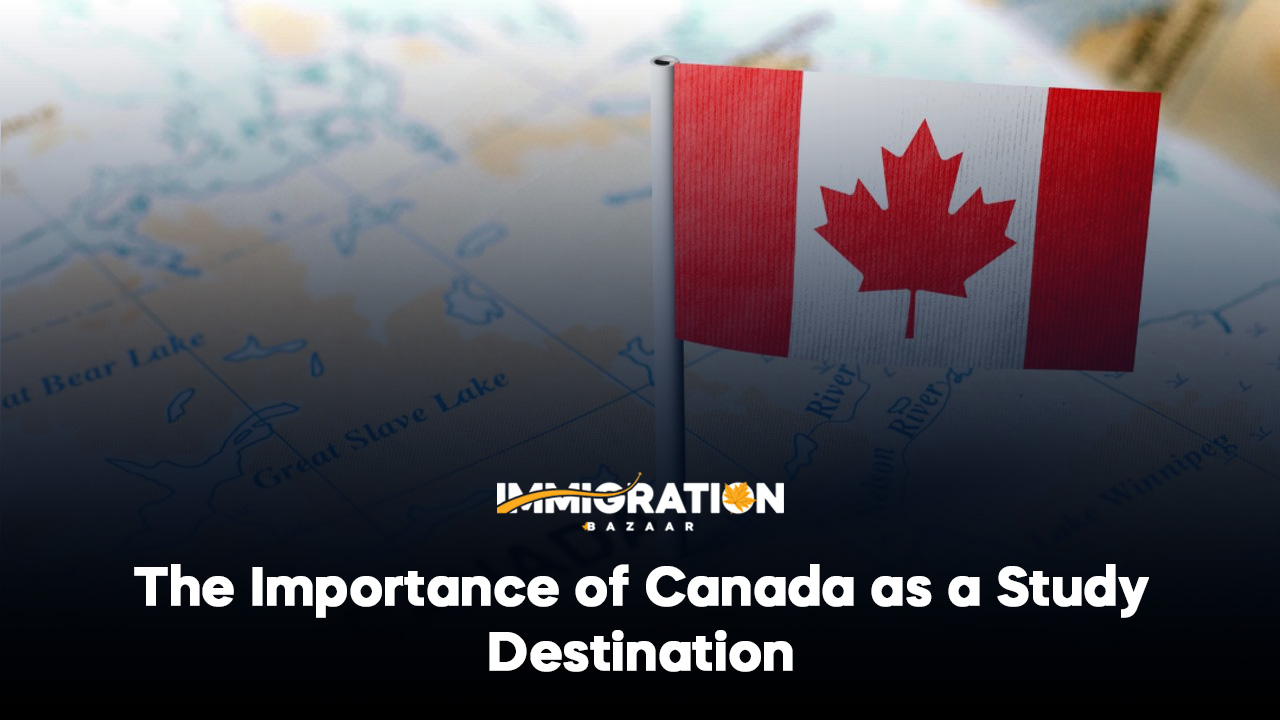The recent developments in Canada’s student visa policies, particularly the significant reduction in visa approvals for Indian students, have raised questions about the future of higher education in Canada for international students. With reports indicating that student visa approvals have been halved, many aspiring Indian students are left wondering if pursuing higher education in Canada is still a viable option. This reduction in visa approval rates has sent shockwaves through the international student community, given that Canada has long been a top destination for students from India and other countries due to its quality education, diverse culture, and opportunities for post-graduation employment.
In this article, we will explore the changes in Canada’s student visa policies, analyze the reasons behind the reduction in approval rates, discuss the implications for Indian students, and consider alternative study abroad options. We will also look at the broader context of global student mobility and whether Canada remains a desirable destination for higher studies.
- The Importance of Canada as a Study Destination
A. Canada’s Popularity Among International Students
Over the past decade, Canada has emerged as one of the top destinations for international students, particularly from countries like India, China, and Nigeria. In 2022, Canada hosted over 620,000 international students, with a significant portion coming from India. Indian students, in particular, have been drawn to Canada for several reasons, including:
- High-Quality Education: Canada is home to numerous world-class universities and colleges that offer a wide range of academic programs, including STEM fields, business, arts, and healthcare. Institutions such as the University of Toronto, McGill University, and the University of British Columbia consistently rank among the top in the world.
- Affordability: Compared to other popular study destinations like the United States and the United Kingdom, Canada offers relatively affordable tuition fees and a lower cost of living. This makes it an attractive option for students from middle-income countries who are looking for quality education without the burden of massive student debt.
- Post-Graduation Opportunities: Canada’s Post-Graduation Work Permit (PGWP) allows international students to stay and work in Canada for up to three years after completing their studies. This work experience can be a pathway to permanent residency through programs like the Canadian Experience Class (CEC).
- Multicultural Environment: Canada is known for its inclusive and welcoming attitude toward immigrants and international students. Its multicultural cities, such as Toronto, Vancouver, and Montreal, offer a safe and diverse environment where students can experience different cultures and build international networks.
B. The Indian Student Boom
The number of Indian students choosing to study in Canada has seen a dramatic rise in recent years. According to official statistics, Indian students make up the largest group of international students in Canada. This is largely due to Canada’s favorable immigration policies, the ability to work while studying, and the possibility of transitioning to permanent residency after graduation.
However, the recent 50% reduction in student visa approvals has put this trend in jeopardy, causing many students to reconsider their plans.
- Reasons Behind the Reduction in Student Visa Approvals
A. Policy Changes
One of the main reasons for the reduction in student visa approvals is the tightening of immigration and visa policies by the Canadian government. In recent months, Canada has introduced more stringent rules for student visas to address concerns related to fraud, misuse of student visas, and an overwhelmed immigration system. These changes include:
- Increased Scrutiny of Visa Applications: Canadian immigration authorities have become more cautious in granting student visas due to concerns about fraudulent documentation and misrepresentation. This has led to increased scrutiny of applications, with a higher rate of refusals for students who do not meet the necessary criteria.
- Concerns About “Non-Genuine” Students: There has been growing concern that some individuals are using the student visa pathway to enter Canada without a genuine intent to study. Instead, they may seek to work illegally or overstay their visas. To address this, Canadian authorities are focusing on weeding out applications from individuals who may not be bona fide students.
- Impact of the Pandemic: The COVID-19 pandemic disrupted global travel and education systems. While Canada initially took steps to accommodate international students during the pandemic, such as offering online learning options and flexibility with visa extensions, the long-term effects of the pandemic have strained the immigration system. Processing delays, backlogs, and changes in visa policies have contributed to the decline in approvals.
B. Capacity Issues and Overburdened Immigration System
The surge in international student applications, particularly from India, has placed a significant strain on Canada’s immigration processing system. The Canadian government has been struggling to keep up with the increasing number of applications, leading to longer wait times and stricter vetting processes. This backlog has resulted in a higher rejection rate as authorities prioritize managing the influx of applications.
Moreover, concerns have been raised about the ability of Canadian institutions to accommodate the growing number of international students. Overcrowded campuses, a shortage of student housing, and limited access to support services have prompted the government to reassess the number of student visas being granted each year.
C. Economic and Social Factors
Canada’s decision to reduce student visa approvals may also be influenced by broader economic and social factors. As Canada faces economic challenges, including inflation and a potential recession, the government may be taking steps to protect domestic employment opportunities. By limiting the number of international students who can enter the country and subsequently join the workforce, Canada may be aiming to reduce competition for jobs and ensure that Canadians have access to employment first.
Additionally, the integration of international students into Canadian society has raised concerns about pressure on social services, including healthcare and housing. In response, the government may be seeking to balance the benefits of attracting international students with the need to manage the country’s social infrastructure.
- Implications for Indian Students
A. Impact on Future Prospects
The reduction in student visa approvals has significant implications for Indian students who have been planning to pursue higher education in Canada. Many students and their families have invested substantial amounts of time, money, and effort into preparing for their studies abroad, and the sudden tightening of visa policies has created uncertainty.
For those students whose visas have been rejected or delayed, there is the emotional and financial toll of not being able to fulfill their educational aspirations. This also has broader implications for their career prospects, as studying in Canada was seen as a stepping stone to gaining international work experience and potentially securing permanent residency.
B. Alternative Study Destinations
As the likelihood of obtaining a Canadian student visa diminishes, Indian students are increasingly exploring alternative study destinations. Countries such as Australia, the United Kingdom, Germany, and the United States are becoming more attractive options for students who are seeking high-quality education and favorable post-study work opportunities.
- Australia: Australia has always been a popular destination for Indian students due to its welcoming immigration policies, high-quality universities, and strong job market. With more lenient visa policies and the ability to work while studying, Australia is becoming an appealing alternative to Canada.
- United Kingdom: The U.K. has also seen a rise in the number of Indian students, particularly after the reintroduction of the two-year post-study work visa. British universities are highly regarded, and the relatively short duration of many undergraduate and postgraduate programs makes the U.K. an attractive option for students looking to enter the workforce quickly.
- Germany: Germany offers a unique proposition with its high-quality public universities that charge little to no tuition fees for both domestic and international students. For students interested in STEM fields, Germany’s strong engineering and technical programs are a major draw. Additionally, Germany offers a variety of English-taught programs, making it more accessible to non-German speakers.
- United States: While the U.S. remains an expensive option for many students, its diverse range of institutions and robust academic programs continue to attract students from India. The Optional Practical Training (OPT) program, which allows students to work in the U.S. for up to three years after graduation, is also a key factor in its continued appeal.
C. Financial and Emotional Strain
For Indian students who were counting on studying in Canada, the visa rejections and delays are causing significant financial and emotional strain. Many students have already paid for tuition, housing, and travel expenses, only to have their visas denied. This leaves families in difficult situations, as they must navigate refund policies, defer their plans, or look for alternative options.
The emotional impact is equally profound, as students face the disappointment of having their dreams of studying abroad dashed. Many students have spent months or even years preparing for their studies in Canada, including learning English, applying to universities, and securing funding. The sudden shift in visa policy has left them feeling uncertain about their future.
- Canada’s Response to Visa Reductions
A. Government’s Justification for the Reduction
The Canadian government has justified the reduction in student visa approvals by citing concerns about managing immigration flows, protecting the integrity of the immigration system, and ensuring that international students are genuine. Authorities have emphasized that the changes are aimed at preventing fraud and ensuring that Canada’s immigration system remains fair and efficient.
Additionally, the government has highlighted the importance of ensuring that international students have access to adequate resources and support once they arrive in Canada. By reducing the number of students, the government believes it can better manage the challenges associated with providing housing, healthcare, and job opportunities to international students.
B. Potential Future Adjustments
While the current reduction in visa approvals may be discouraging, there is a possibility that the Canadian government will adjust its policies in the future. As Canada continues to face labor shortages in key sectors such as healthcare, technology, and skilled trades, international students will remain a vital source of talent for the Canadian economy.







